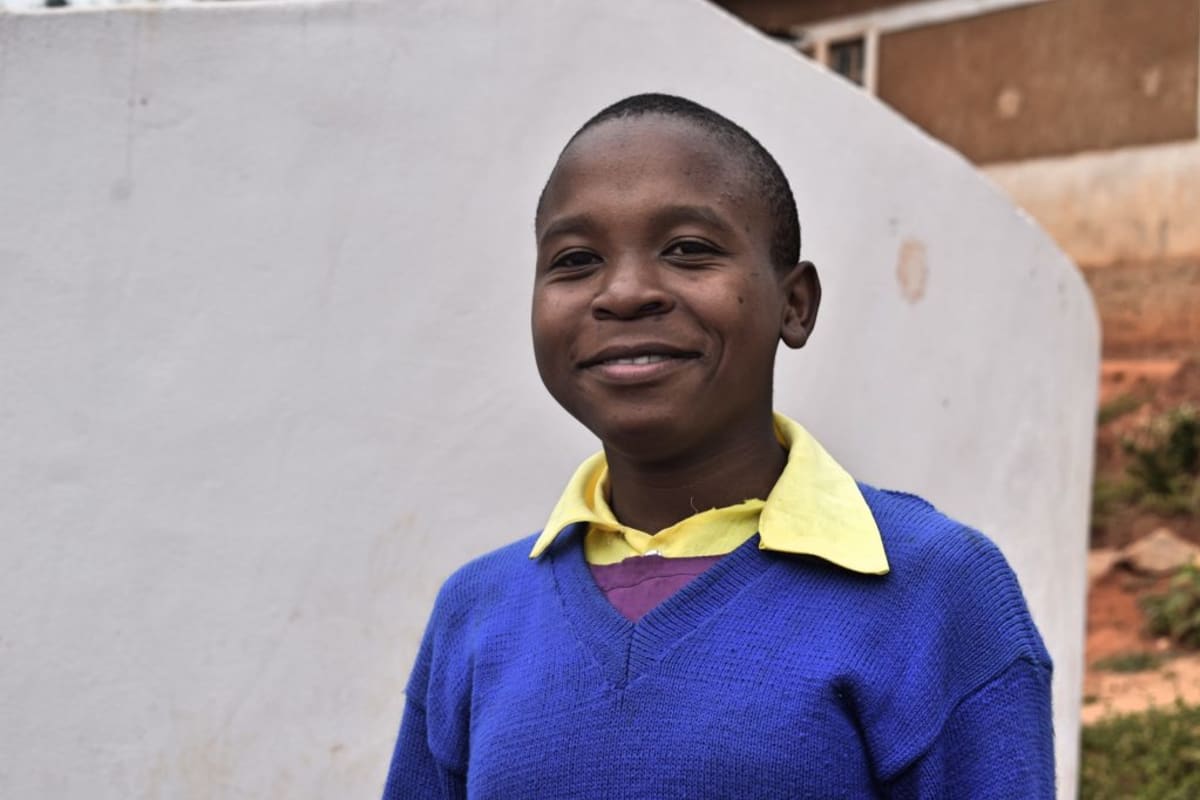Kyamulinge Primary School relies on its 318 students to carry water from home each day. The students are expected to come every morning carrying a jerrycan of water. Often, pupils report to school tired because they come carrying books and lunches along with their water from home. Once the water in the school tanks depletes, the students are then sent to fetch water at Kambu well, which is two kilometers away from the school.
As a result of inadequate water supply, the school had to scrap the feeding program. That is why students are now expected to carry their food from home, too, adding to the weight of their daily walk. Due to intense poverty levels in the area, some students do not bring their food from home and may stay hungry the entire day, affecting their academic performance. Parents complain that their children are always tired in the morning as they are expected to bring water to school.
"It is very strenuous for us to carry the jerrycans of water daily. We arrive at school always tired and exhausted. We walk for very far distances when going to fetch water every morning and then we are to come to school to learn, yet we arrive very tired," said Jeniffer, a student at the school.
The sources in which the students collect their water are often open, meaning many students often report to school with dirty water. Students complain of illnesses such as stomachaches, typhoid, dysentery, and other waterborne illnesses resulting from drinking the contaminated water from these open sources. Consequently, cases of absenteeism due to sicknesses are frequent.
"Due to sicknesses, the learners may fail to meet their academic expectations as they are unable to concentrate in class," said Headteacher Martin Mulei.
Cleanliness, hygiene, and sanitation practices are not well maintained due to inadequate water supply. The area is arid, and they have to struggle to get clean water. The school's growth and development, especially the school's infrastructure, is significantly stagnated as they have inadequate water supply to propel the construction of future structures.
The school is located in Makueni County of Kenya. It is found atop a hill in Kyamulinge village. The school was established in 1962 by the Catholic church after one community member donated their land to develop a school. It has grown over time through the parents' and the government's assistance through the Ministry of Education.
Rain Tank
We will build a 104,000-liter rain tank for this school, making the others look tiny in comparison. Because of how rarely it rains in Southeastern Kenya, this tank's large volume is designed to store as much water as possible during the seasonal rains, making more water available through the dry months. This water will benefit the students, teachers, and additional staff.
Parents will mobilize the materials needed for construction, including sand, stones, and water. They will also lend their strength and time to help with the construction. We will complement their materials with a skilled artisan to lead the project and provide the tools, lumber, metal, cement, and gutter system.
As soon as the tank has time to cure, it can begin collecting rainwater for the school's use.
Training
We will train students and staff on sanitation, hygiene, and other topics for one day. Those in attendance will form a school health club that will promote good hygiene and sanitation practices at school and home. They will learn all of the steps to proper handwashing, how to treat water, and how to keep their environment clean. The school will also be taught how to oversee best and maintain their new rain tank and handwashing stations.
Handwashing Stations
A total of three handwashing stations will be installed upon the project’s completion and before training. These are 1,000-liter plastic tanks fitted with three taps each, allowing nine students to wash their hands at once. The student health club and school management will be responsible for making sure the tanks are filled with water and that a cleaning agent such as soap or ash is always available.

 Rainwater Catchment
Rainwater Catchment
 Rehabilitation Project
Rehabilitation Project
































